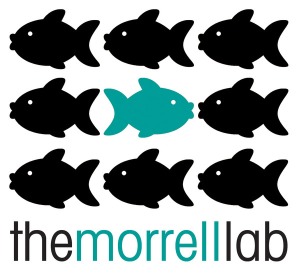This week marks the launch of our new, University-funded research cluster on Parental Care. About this time last year, the University put out a call to fund new research clusters, providing money for a combination of PhD students and postdocs, to allow groups of academics to develop their research into exciting areas. Isabella Capellini, James Gilbert and I put together a bid for 2 PhD students and a PDRA, and were successful! We advertised the jobs and recruited some excellent new people to join our emerging research cluster.
Isabella and James both have a track record in parental care research. Isabella has just finished supervising an excellent PhD on the evolution of male care in mammals (well done Hannah!), and James has done lots of work on parental care in insects and has a string of smashing papers. Me? I have a few bits that might be loosely termed “reproductive biology” – stickleback nests[1], guppy sexual behaviour[2,3] and some theory about mate guarding[4] and protandry[5]* from my PhD days. So parental care is really a new field of research for me.
So over the next couple of weeks, our two new PhD students, Stephanie McLean and Yannis Dimopoulous, and postdoc Dr Andrew Furness are joining Isabella, James, James’s current PhD student Alex Austin and I to create a ready made research cluster of people all interested in the same sorts of things. Stephanie will be working empirically on fish, Yannis will be doing comparative work on parental provisioning in insects, and Andrew will also be working comparatively, on parental care and life histories in fish and frogs.

Anemone fish protecting its spawn (Silke Baron CC-BY 2.0), Bees (PollyDot CC0), Common rocket frog with tadpoles (Crisco 1492/Brian Gratwicke CC-BY 2.0), Ducklings (Capri23auto CC0)
*When migratory birds arrive back at their breeding grounds, males often arrive earlier than females. This is protandry, and we asked why it happens.
[1] Morrell, LJ, Hentley, WT, Wickens, VJ, Wickens, JB & Rodgers, GM. (2012) Artificial enhancement of an extended phenotype signal increases investment in courtship in three-spine sticklebacks. Animal Behaviour 84: 93-101 [link] [OA version]
[2] Chapman, BB, Morrell, LJ & Krause, J. (2009) Plasticity in male courtship behaviour as a function of light intensity in guppies. Behavioral Ecology and Sociobiology 63: 1757–1763 [link]
[3] Croft, DP, Morrell, LJ, Wade, AS, Piyapong, C, Ioannou, CC, Dyer, JRG, Chapman, BB, Wong, Y & Krause, J. (2006) Predation risk as a driving force for sexual segregation: a cross-population comparison. American Naturalist 167: 867-887 [link]
[4] Kokko, H & Morrell, LJ (2005) Mate guarding, male attractiveness and paternity under social monogamy. Behavioral Ecology 16: 724-731 [link]
[5] Kokko, H, Gunnarsson, TG, Morrell, LJ & Gill, JA. (2006) Why do female migratory birds arrive later than males? Journal of Animal Ecology 75: 1293-1303 [link]
